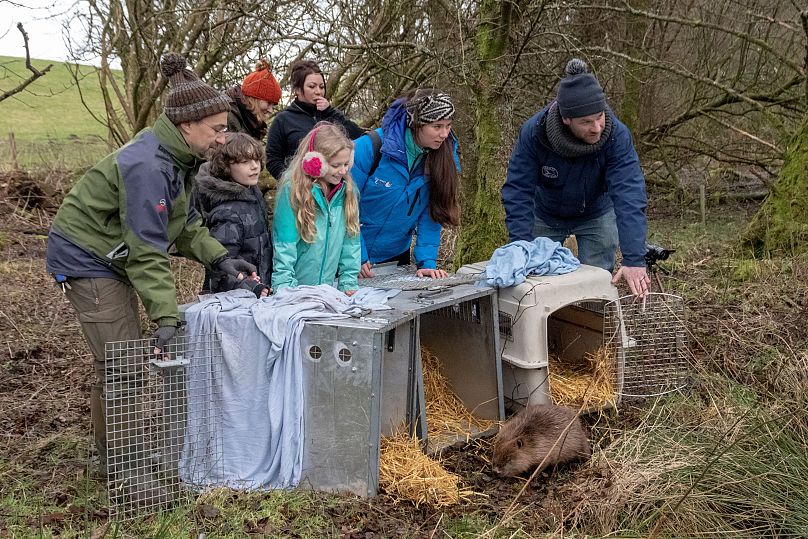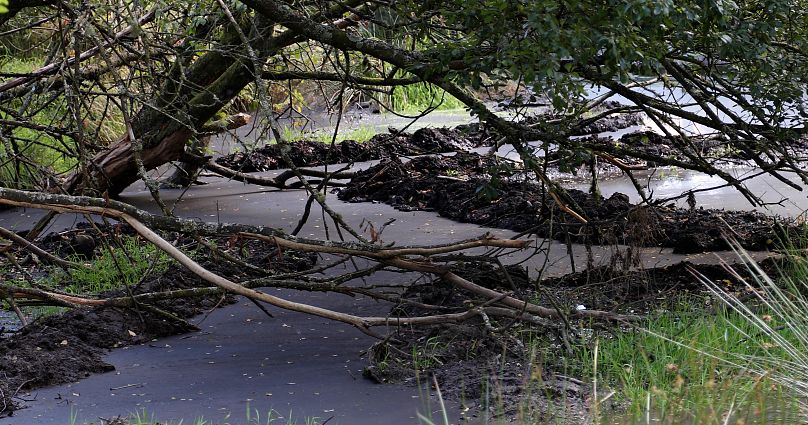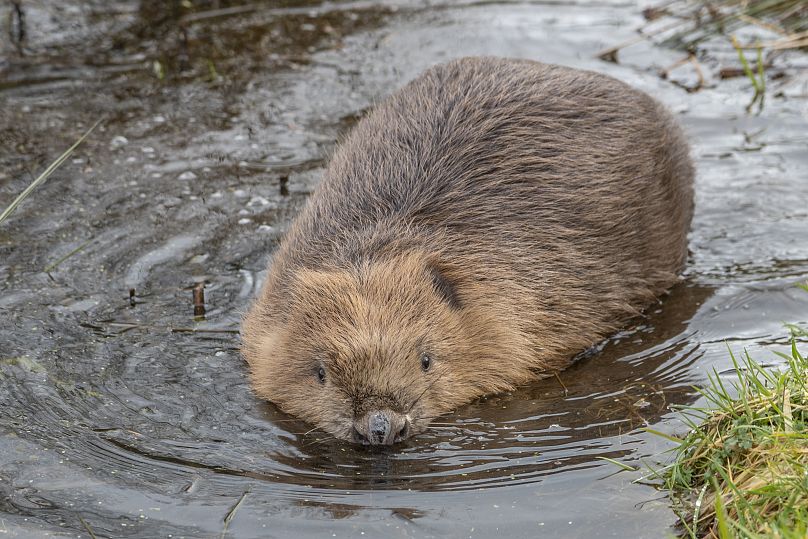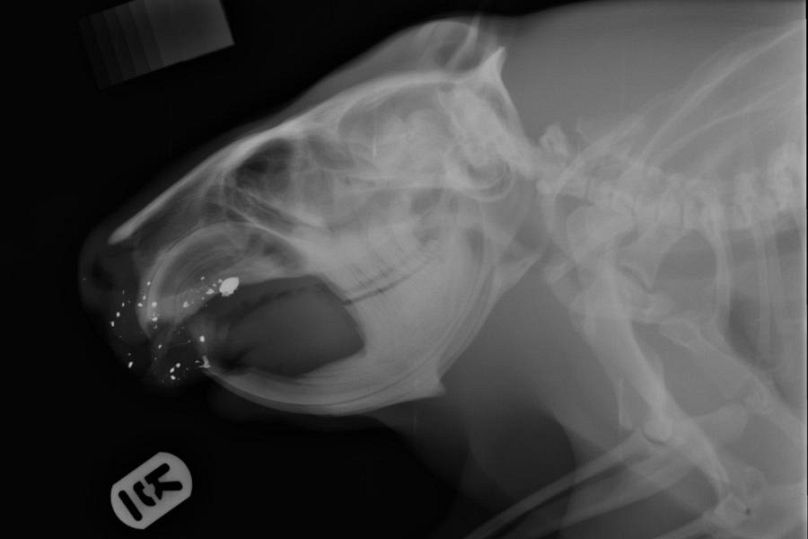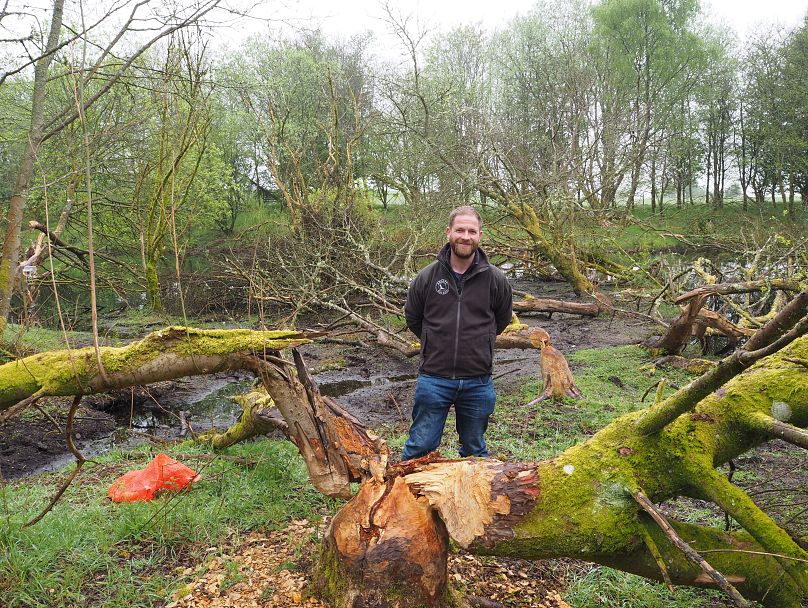NatureScot is making beaver carcass returns obligatory, after outrage over ‘inhumane’ shootings of the protected species.
Tom Bowser already believed in beavers when he opened his home to them in November 2021.
A fifth generation son of the Argaty estate near Stirling, Bowser (39) fought hard for the farm to become the first privately owned place to relocate beavers in Scotland.
“It’s been interesting to see how the magician does their tricks, and how they made these changes,” he says, as we walk around the outskirts of a beaver occupied pond in May.
Some trees look like they’ve been cracked open and licked clean by lightning. Others as if they’re in a top-heavy game of jenga, one night away from toppling down. And then there’s the fallen trunks that have accepted their fate - with new branches shooting up like “harp strings”.
In total, 14 beavers have been released at Argaty since the Scottish government allowed the animals to be translocated from conflict areas on the River Tay.
Their most recent arrival, called Fig, was found shot on a Perthshire roadside in January: wounded proof of how far beaver-human relations still have to go.
Why do Scotland’s beavers need protection?
Hunted to extinction over 400 years ago, native beavers made a mysterious reappearance in Tayside in 2001. After a few trial years at the first public translocation site in Knapdale on the west coast, the animals were allowed to remain and, in 2019, granted European protected species status.
This makes it illegal to kill them without a licence - but beaver advocates say these are still too easily handed out to landowners, and weakly regulated - as Fig’s botched shooting indicates.
There are now around 1,500 beavers living wild in Scotland, which could reach 10,000 by 2030 according to a new report from the country’s nature agency. 42 per cent of beavers ‘removed’ from conflict sites in 2022 were relocated rather than shot - up from 28 per cent in 2021 - the latest ScotNature data shows.
“It is welcome news to see the increase in the proportion of beavers being translocated and that numbers in Scotland are increasing, but more work is required,” says biodiversity minister and co-leader of the Scottish Green Party Lorna Slater.
Since the Greens entered a power sharing deal with the SNP in 2021, the government’s position on beavers has softened. Last year NatureScot unveiled a 23-year plan to aid the species’ spread across the country.
Ahead of the comeback curve, Argaty gives a glimpse into what beavers are capable of - and what it takes to get people on side.
What are the ecological benefits of beavers?
“I thought it might have been one big explosion of biodiversity,” says Bowser. “But it’s more like a series of small interventions; hundreds of little explosions going off with this accumulative effect.”
A living tree isn’t the only good tree, he points out. Around 40 per cent of UK woodland wildlife is reliant on deadwood. As it decomposes more slowly, standing deadwood in particular is a perfect magnet for insects - followed by birds, bats, and fish in the right places.
The beavers had even more tricks up their sleeve. Bowser’s biggest surprise came last summer, during the heatwave that swept the UK and shrunk the farm’s waterways.
“We were so worried they were just going to go because they would want to have their 60 centimetres,” he says, referring to the minimum depth beavers need to fully submerge in water and so feel safe swimming to and from their lodges.
Instead, the mammals started to dredge the pond, pushing up “little mountains of mud” to maintain deeper channels through it. “They must have kept thousands of species alive that were dependent on the water,” Bowser says, creating “wee opportunities for nature” even under difficult conditions.
From droughts to floods: Can beavers help us cope with climate change?
Winter brought “endless” rainfall - and another pleasant surprise. The beavers kept on damming away, holding back the water that often floods the farm tracks and creeps into sheds, damaging expensive electrical equipment.
Beavers “make water work harder to get through the landscape,” Bowser explains, and that played to their advantage here.
“We know that climate change is going to give us more of these long wet winters,” he adds. “An animal like the beaver is going to be so important in those conditions. Without them, the chance of regulating water supplies is severely diminished.”
Researchers at the University of Stirling installed a network of water level and temperature sensors around Argaty ahead of the first beavers being released in 2021, in order to see how they can boost ecological resilience in the face of extreme events.
It’s early days in the burgeoning field of beaver science. But Professor Nigel Willby is clear that, “by acting as sponges, beaver wetlands retain water and release it slowly during times of drought creating a refuge for species that would be lost from streams that we will increasingly see running dry during the summer.”
Why are beavers controversial?
It’s not always going to be perfect, Bowser concedes; beavers don’t waterscape on demand. Magicians, engineers, agents of chaos - it’s all in the eye of the beholder.
Beavers’ brand of ‘found art’ has made some astonishing stories over the years. In 2016, canoeists spotted a prosthetic leg wedged into a dam in the US. In February, the Bowsers were confused to see the pondside webcam they use to monitor beavers showing blurry close-ups of mud. It appeared the rodents fancied the stick it was attached to for their lodge roof.
A source of wonder and joy to many, beavers still have some tough crowds to win over in the UK - particularly among the farming community.
“Beavers, in the wrong areas, are proven to cause significant and costly agricultural damage so consultation and consensus are key,” a National Farmers’ Union (NFU) spokesperson told investigative outlet The Ferret year.
“The sites in Tayside where beavers have been released have experienced the degrading of lowland agricultural land, with field drainage ditches being dammed by the animals leading to the wetting up of an entire field and the subsequent loss of crop yield,” wrote then NFU flood management and access adviser Dr Mhari Barnes in 2019.
What happened to Fig, and how is Scottish beaver management changing?
“We knew it was going on and Fig was just the animal that proved it,” says Bowser.
He’s not talking about beaver shootings per se, but a perceived leakiness with the rules that is enabling extra suffering.
In 2022, 63 beavers were shot under lethal control licences, the new NatureScot data reveals. Not one of their bodies was handed in for autopsy, despite this being a request from the agency to check the animals are killed humanely.
In response to the “disappointing” rate of carcass returns, NatureScot now says it’s upping the request to a condition of lethal control licence. “Whilst we recognise there may be health and safety issues associated with retrieving carcasses in some cases, we expect this to be the exception,” a spokesperson tells Euronews Green.
Beaver campaigners are also concerned that the vast majority (169 of 268 beavers killed between 2019 to 2021) are being shot in flowing water, where there is increased risk of bullets ricocheting and causing slow deaths.
There will be people who don’t bother to get a licence, Bowser speculates, “but there’s equally a very good chance that [Fig’s shooting] was a perfectly legal act, which is the more troubling thing.”
When the Scottish Society for Prevention of Cruelty to Animals (SSPCA) picked Fig up, they discovered his top two teeth had been blasted out and bits of shrapnel were still lodged in his head. He was slowly nursed back to health on a diet of wood and carrot shavings.
“I heard about him and it was just sitting there ticking away in my brain a bit,” Bowser tells me. NatureScot gave him the green light and Fig arrived in March with a female. “They could have fought like hell” he says, but seemed to hit it off.
Bowser suspects they’ve moved on now, down to the River Teith - a tributary of the River Forth which holds beaver families throughout its upper catchments. He’s quick to add that this is quite normal for beavers, especially ones who have reason to get well away from humans and the last place they saw them.
Besides, losing two out of fourteen beavers released isn’t bad going.
What’s next for beavers in Scotland?
Bowser isn’t in a hurry to fill the pond vacancy. “We’ve got a nucleus of a beaver population in this area now,” he says. “What I would really like to see is other people coming and offering to take them to other places and kickstarting populations there.”
There are signs of this. A family of seven was moved from Tayside to Loch Lomond in January, while charity Trees for Life and the Cairngorms National Park Authority have also put in applications. “A number of other expressions of interest” have been received by NatureScot, which has updated its guidance.
Most of the beavers trapped last year (27 out of 45) were released to licenced projects in England, however.
What would Bowser say to Scottish landowners, in a position to consider being beaver hosts?
The toll of being the first gives him pause for thought. “You can’t gloss over how tricky it was and the kind of mental impact that has on you,” he says.
“Especially the feeling… there was a long time when it looked like bureaucracy and wider politics would stop us actually getting the beavers, even though we got so much support [...] but you would always be remembered as a person that had tried to force beavers on a few of your neighbours who didn't want it. So that was really tough.”
Some of those neighbours have come round; others he suspects won’t speak to the family, Tom and his parents Niall and Lynn, again. He acknowledges that a second round of difficulties likely lies ahead, when more kits disperse. Though he hopes that neighbouring farms might notice less of their land getting flooded in future too.
“Setting all that aside, the fact that you actually have beavers in your place and they're doing these incredible things is really, really incredible. They’re just amazing animals,” he says, “and they badly need people's help.”
NatureScot comments that: “Those carrying out beaver lethal control must be trained and accredited by [the agency] to ensure best practice is followed. The training ensures that accredited controllers have the skills and knowledge to undertake any lethal control humanely, work to the highest standards of wildlife welfare and behave in a manner sensitive to the issues around lethal control.”
It adds that any evidence of illegal killing of beavers or breach of licence conditions will be reported to Police Scotland wildlife crime officers. NatureScot encourages that any beavers found dead are reported to beavers@nature.scot so they can be collected for post mortem.












